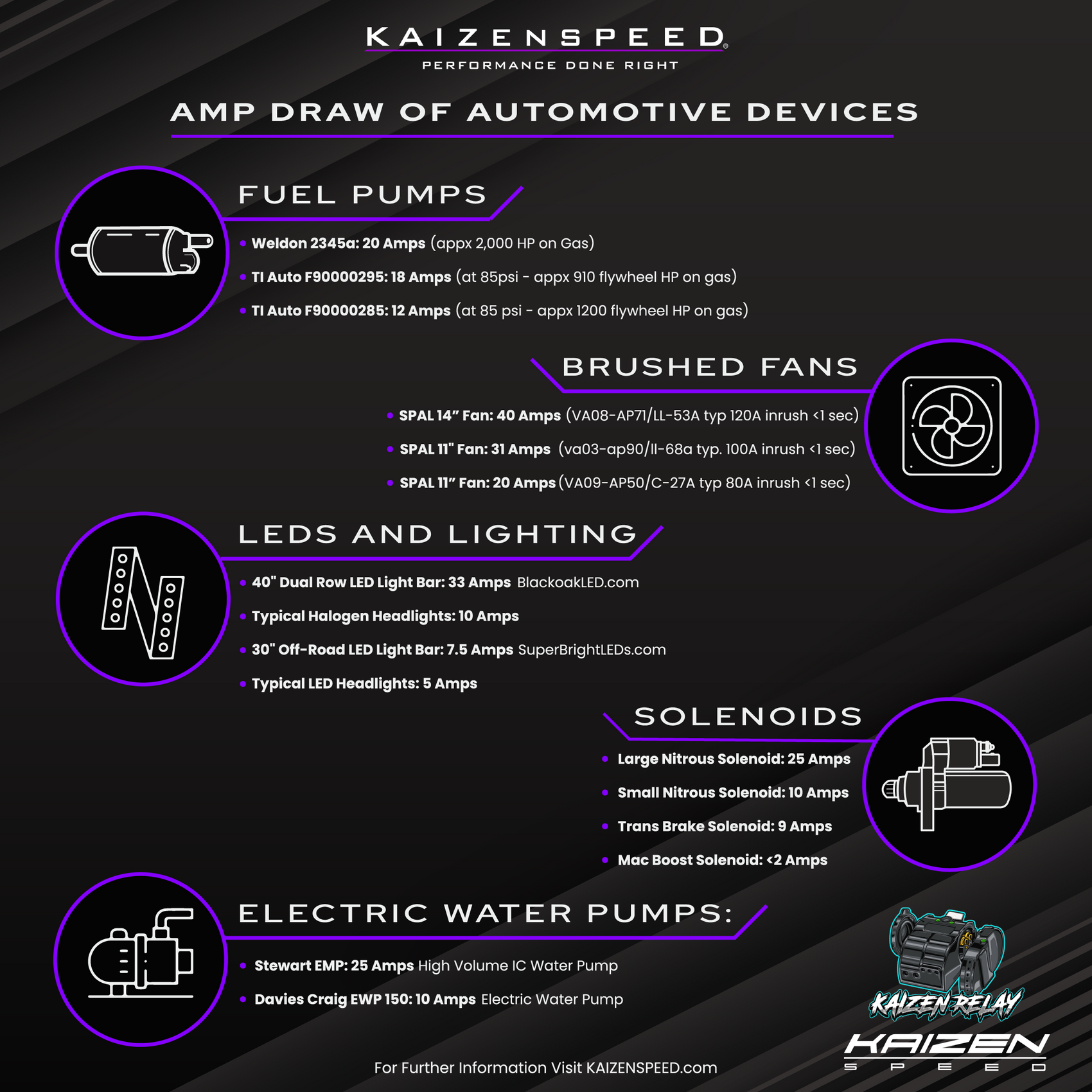One of the first things you'll need to know when installing an aftermarket fuel pump, fan, light bar or any electronic device is: how much current does it draw? Do you know how much your fuel pump draws? How about your fan? These values can vary dramatically even among the same manufacturer. Some SPAL 11" fans draw 20 Amps while other 11" fans by the same manufacturer will draw 38 Amps!
Amp draw is commonly overlooked and you may not notice anything until it's too late. At best you'll just blow a fuse. But in the case of a fuel pump this will happen at wide open throttle (WOT) causing the car to run lean while you're not paying attention to anything other than the boost gauge!
In the case of a fan, overlooking the amp draw may result in the use of connectors or wire size that can't handle the current causing a fan that only works intermittently, or no fan operation at all. Knowing the amp draw of your device will help you to size your wiring, connectors, and even your relay. To make a long story short, you should know what you're doing or take it to someone who does!
To help this, we've created a graphic showing the amp draw of some common devices. Some interesting things to note is that a boost solenoid draws very little amperage and won't even require a relay, which is why it can be driven directly from the Control Module. Also noteworthy is that LED lightbars of similar size may draw significantly different current - so be sure to look for the amp draw for your device in the supplied documentation.

The graphic also mentions inrush current which is common on electric fans and may exceed 5x the running current (25 Amp continuous current may have 125 Amps of startup or inrush current) but this drops within about a second. Many relays can't deal with the inrush current when cycling a fan on and off and will fail - so don't use cheap relays. We recommend Kaizen Relays :) for fans and big pumps because they are solid-state and rated for 40A continuous/150A inrush. We also incorporate a flyback diode to protect our circuitry when PWM'ing an inductive load such as a fan or a fuel pump. Big inrush current is why you may notice headlights dimming when a big fan kicks on. Soft-start can be used to "spool up" the fan instead of driving it full speed instantly but this is only possible with a PWM capable relay such as a Kaizen Relay.
As always, let us know if you have any questions!

